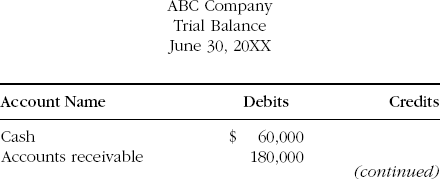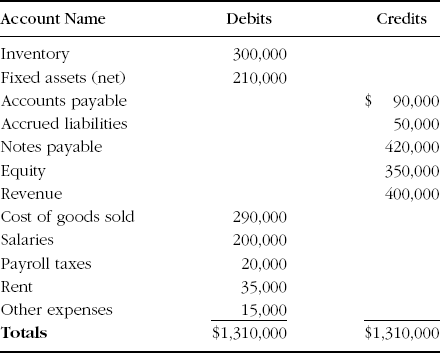Chapter 11
The Trial Balance
What Is a Trial Balance?
The trial balance is a report listing the ending debit and credit balances in all accounts at the end of a reporting period. The trial balance has three uses:
1. Debits equal credits. The total of all debits should equal the total of all credits, resulting in a report balance of zero. The trial balance is an aggregation of all transactions created during a reporting period, and so is the best source document for determining if all entries exactly offset each other.
2. Worksheet. Depending on the report format, the trial balance can be used as a worksheet for planning adjusting entries.
3. Source of financial statements. The information on the report can be aggregated to create the financial statements, though accounting software handles this task automatically.
An example of a trial balance follows. Note that the header for the report lists the date as of which the information in the report was compiled.


The totals in the debit and credit columns in the preceding example match, indicating that all original entries were created with exactly offsetting debits and credits.
Are There No Errors in a Balanced Trial Balance?
If the total of all debits and credits in a trial balance net to zero, this is a good sign, but it does not ...

